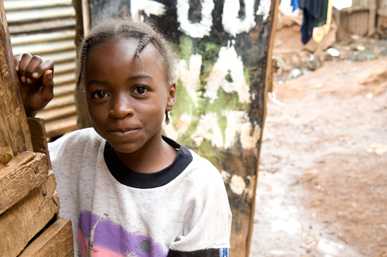Preventing New Infections

What We Do
Our first line of defense against HIV and tuberculosis (TB) is prevention. CDC works in more than 50 countries alongside Ministries of Health, community groups and other key partners and stakeholders to support the implementation of several proven interventions aimed especially at key populations in order to prevent these deadly diseases.
- Antiretroviral therapy (ART). By providing life-saving care and treatment to people living with HIV, CDC also helps reduce the risk of transmitting HIV to others. Uninfected high-risk persons can also take daily doses of ART medication, also known as pre-exposure prophylaxis (PrEP), to substantially decrease their risk of acquiring HIV.
- HIV testing. CDC supports HIV testing to ensure that individuals living with HIV are linked to care in order to prevent the spread of the disease to others and those that are HIV negative but at risk can remain HIV free.
- Availability of condoms, condom-compatible lubricants, and harm reduction interventions. CDC supports the provision of condoms, condom-compatible lubricants, as well as harm reduction interventions such as syringe services, and opioid prevention and treatment to prevent HIV among populations at high risk of infection.
- Voluntary medical male circumcision (VMMC). CDC supports VMMC among uninfected men which has been shown to reduce the risk of HIV infection by approximately 60 percent.
- TB Preventative Therapy (TPT) among People Living with HIV. CDC provides TPT to people living with HIV to prevent active TB disease.
- TB Infection Prevention and Control. CDC works with Ministries of Health and health facilities around the world to ensure infection control measures are in place to reduce the risk of TB transmission between patients and healthcare workers.
Why We Do It
HIV and TB can be prevented. According to UNAIDS estimates, the global response to HIV has averted 30 million new HIV infections and 7.8 million AIDS-related deaths since 2000. TB interventions have saved 49 million lives since 2000. Effective prevention strategies can successfully prevent HIV and TB, but there is an urgent need to scale up these strategies, especially for key populations and those at greatest risk of infection.
Results
In 2016, through PEPFAR and in collaboration with partners, CDC:
- Completed HIV testing and counseling for 45.5 million people
- Delivered antiretroviral medications to 411,000 HIV-positive pregnant women to prevent mother-to-child transmission of HIV
- Supported voluntary medical circumcision procedures for more than 1.2 million men – nearly half of all voluntary medical circumcision procedures supported by PEPFAR worldwide
- Provided 30,000 families with a multi-session intervention to reduce risk behaviors in adolescents through positive parenting practices and effective parent-child communication
To help prevent TB globally, CDC and partners:
- Helped develop global guidelines for prevention, diagnosis, and treatment of TB among PLHIV
- Established best practices to end TB transmission in health facilities
- Identified TB hotspots to target screening efforts
- Helped to create the global roadmap to stop TB in children
- Increased access to TB preventative therapy by making sure it is included as part of standard services that are already being provided to people living with HIV
For more information on preventing new infections, see below:

Preventing HIV One Family at a Time
In South Africa, like many cultures, it is taboo to talk about sex with your children. But with HIV prevalence as high as 11 percent, in some regions, doing so is critical. See how CDC is helping parents and children in these high burden regions, talk about sex to give youth the skills they need to stay healthy.
Read more: HTML »
- Page last reviewed: April 28, 2017
- Page last updated: April 28, 2017
- Content source:


 ShareCompartir
ShareCompartir